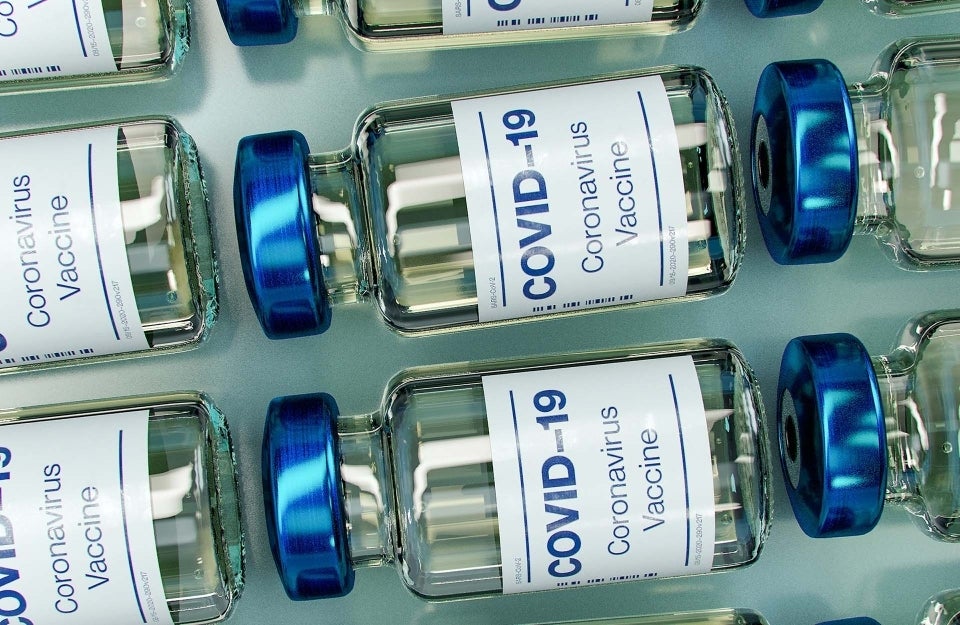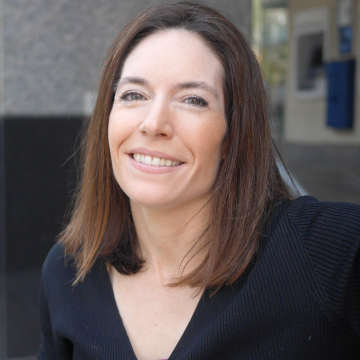When the Message Matters, Use Science to Craft It
The new Message Effects Lab aims to understand and develop communication around what motivates specific behaviors for specific populations, including COVID-19 vaccination.

Photo Credit: Daniel Schludi / Unsplash
Penn researcher Jessica Fishman has always been fascinated by what sways decision-making.
“As a teenager, one word could dramatically influence whether I wanted to do something,” she says. “I remember once, when my dad was excited to serve his family a fish dinner, he proudly announced that the fish cost very little. For him, this was good because food was hard to come by when he was growing up. But for me, his description of the ‘cheap’ fish signaled it was of little value or even undesirable rather than a good deal. It immediately decreased my interest in eating that food. We now know a lot more about the types of messages that can backfire.”
But why do certain types of communication succeed over others? Might tweaks to the messaging make a difference in someone’s thought process? Through a new initiative called the Message Effects Lab, Fishman is trying to answer such questions, in collaboration with colleagues from the Annenberg School for Communication and Perelman School of Medicine and a partnership with federally qualified health centers in the nonprofit Public Health Management Corporation network.
“The idea for this started long ago, but it really catalyzed with the pandemic,” says Fishman, who has appointments in Annenberg and Penn Medicine. “COVID-19 has disproportionately harmed underserved communities, and, at least in our first year, we’re focused on developing and implementing specific countermeasures geared toward the inequalities the pandemic is exacerbating.”
Vaccine messaging
Before any actual COVID-19 vaccines existed, a Penn Medicine team was at work behind the scenes trying to understand how to most effectively convey to employees the importance of getting vaccinated when the time came. During a conversation with people at the health system, Annenberg Dean John L. Jackson, Jr. suggested that the type of research Fishman conducted would be a perfect fit to help craft such messages.
Fishman uses rigorous scientific methods to determine the beliefs, emotions, and motivations driving decisions and behavior. “Once we figure out the specific beliefs that discriminate between those who are highly motivated to do something from those who are not,” she says, “then we can test which messages are most likely to bring those with low motivation up, to boost and strengthen their motivation.”
To counter potential COVID-19 vaccine hesitancy, a Message Effects Lab team that included Annenberg professor Andy Tan and Dolores Albarracín of the University of Illinois at Urbana Champaign tested dozens of different messages. Some emphasized education around the coronavirus or the vaccines; others promoted the positive health implications of choosing to get inoculated or the idea that many others felt doing so was the right decision.

Certain vaccine messages increased the percentage of people who wish to get vaccinated by 22% to 27%, depending on demographic group. “Some of the messages people had been rooting for, that they assumed would be the most effective, have been the least effective,” Fishman says. “A common impulse for vaccine campaigns is to think that, if we educate people, if we give them facts, they’ll make the right decision. But often, those facts do nothing to increase motivation or can even cause people to resist more.”
It’s an understanding Fishman incorporated into a similar study she did with the Children’s Hospital of Philadelphia aimed at increasing patient flu vaccine rates. She and colleagues tested five messages sent via text to 25,000 people. They found that the most effective communication combined normative and scarcity messaging, describing how most parents now vaccinate their children against the flu, and the need to act before vaccine doses ran out. “That message increased vaccination appointments and actual vaccination rates,” she says.
COVID-19 testing communication
Given that just a small percentage of the population in the United States has so far received a COVID-19 vaccine, curbing the pandemic quickly means more than just a focus on shots. It’s one reason Penn Medicine’s Robert Gross and third-year infectious disease fellow Cedric Bien-Gund, in partnership with the Message Effects Lab, are looking at how to increase COVID-19 testing with at-home self-testing kits. Using a national sample, the Message Effects Lab found evidence that these kits would be welcome, results they shared recently in JAMA Open Network.
In November 2020, the researchers received National Institutes of Health funding to conduct a clinical trial. “This idea really derived from Cedric’s plan to expand HIV testing,” says Gross, a physician and clinical epidemiologist in the departments of medicine and biostatistics, epidemiology, and informatics. “There are a lot of parallels between COVID-19 and HIV. This was a brilliant way of taking what we know from one sphere and applying it to a novel problem.”
Previous successful efforts to improve HIV testing rates involved arming at-risk or infected people with test kits to share with their social networks. Bien-Gund thought a similar approach might work for the novel coronavirus, particularly in low-income communities of color, who have thus far been getting tested at lower rates than high-income, predominantly white communities and getting the virus more frequently. The randomized control trial Bien-Gund and Gross designed is gearing up to begin shortly.
Patients will receive either take-home test kits or referral cards with information about free testing sites, each to be distributed to friends and family in their social networks. In parallel, Fishman is conducting a study to determine which messaging works best to motivate this behavior for this particular population.
“Ultimately, what we want to do is increase testing,” Bien-Gund says. “We hypothesize that part of this is increasing access, but it’s also about supporting and promoting health behaviors. We’re relying particularly heavily on Annenberg and Jess to help us in that regard.”
Gross reiterates the importance of getting the message right. Partnering with Fishman offers a unique opportunity, he says. “We want to optimize the communication we use to get the word out with a message and tone that’s appealing to people who may have distrust or access issues. At the same time, these people who have come in and gotten tested are force multipliers, so we’re trying to optimize the message that they give to people in their lives.”
Beyond the pandemic
The idea of using tailored communication to address health disparities among vulnerable populations describes much of the research conducted by Tan, director of Annenberg’s Health Communication & Equity Lab. He recently joined Fishman on the Message Effects Lab team.

“I’ve been working in the area of communication and regulatory science, focusing on tobacco control and prevention across diverse populations,” he says. “The goal is to translate what we know in communication science and persuasion theories into scalable and culturally sensitive communications for populations disproportionately burdened with cancer.”
His current work, called Project Resist, uses community-engagement methods to design smoking-cessation messaging directed at young adult women who identify as lesbian, gay, or bisexual. This group smokes at a higher rate than its heterosexual counterpart, he says.
Preliminary findings from a series of surveys showed that messages highlighting the tobacco industry’s targeting of the LGBTQ community would likely work more effectively than traditional messages about smoking’s harms. In June, Tan will launch the first experiment comparing two sets of these anti-smoking messages.
Tan sees work like that of Project Resist, now in its second of five years, and that of the Message Effects Lab as bidirectional: They will learn from each other and incorporate those lessons into future work. With the “onslaught of misinformation,” he says, “having theory-driven, evidence-based strategies that makes sure the correct information gets out to the populations we’re serving is critical.” And not just that the information gets out but also in the best language possible.
“There’s a lot of power in communication,” Fishman says, “because the strength of our motivation—whether we’re slightly motivated or extremely motivated—can make a substantial difference in our behavior.” It’s the foundation upon which the interdisciplinary Message Effects Lab is being built: Communicate effectively using science to understand which words and ideas will lead to the most successful outcomes for COVID-19 vaccines and testing, plus much more.
“The Message Effects Lab realizes some of the most ambitious and vitally important goals of the University of Pennsylvania and the Annenberg School,” says Jackson. “It draws on and builds upon a long history of health communication research in both design and execution. It aims to further break down disciplinary silos to make sure that innovative research leads to genuine social impact, doing so by engaging our local communities as partners to affect meaningful change. We really can’t ask for more.”



